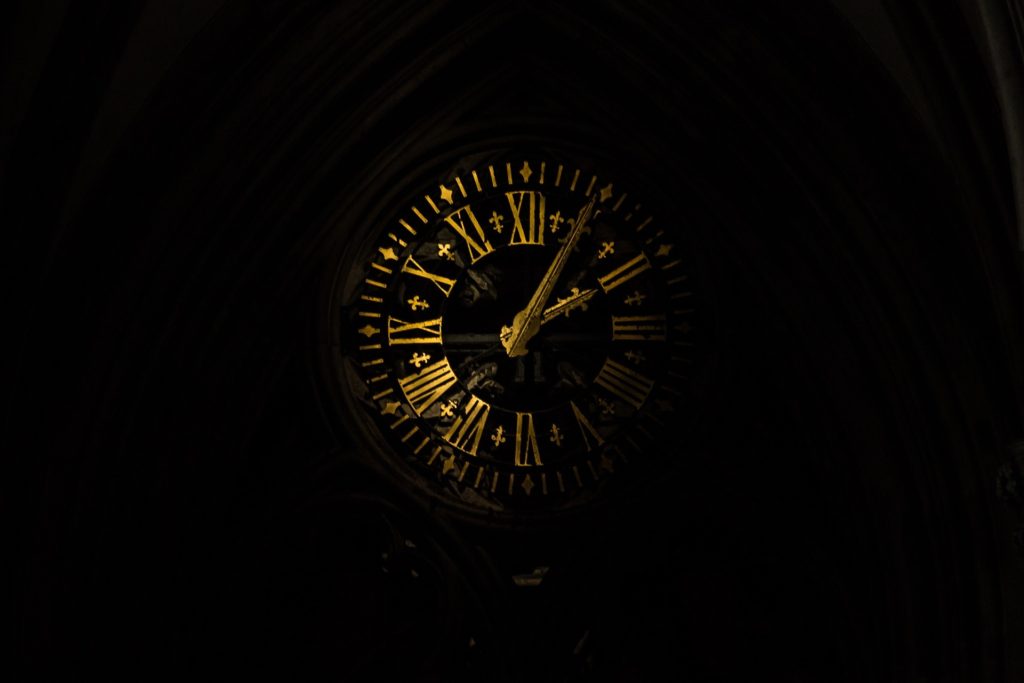
5 Drug-Free Techniques to Try When you Can’t Sleep
The following article has been adapted from my previous post through Psychology Today Here’s to all the chronic insomniacs looking for some relief:
Do you get frustrated when you can’t sleep? You’re not alone.
Up to 30% of the population report sleep disruption, and roughly 10% of people present with significant impairment in daytime functioning due to sleeplessness (1). Sure, there are some who decide to stay up either by choice or necessity. I’m thinking specifically of the overwhelmed single mom or procrastinating college student. Throughout this article, however, “sleeplessness” will refer to those who give themselves the opportunity for sleep, but cannot easily achieve it.
The Complexity of Insomnia
Insomnia itself is a complex condition. Most people experience short-term insomnia at some point in their lives due to common reactions to stressful life events. These might include health problems, relationship difficulties, recovery from surgery, etc. Mental health challenges, such as depression, anxiety, or psychological trauma may also trigger the onset of insomnia. After the initial stressor or psychological problem is resolved, many people find themselves able to sleep well again. Fortunately, this type of “short-term” insomnia tends to last for several days or weeks at most.
For others, however, insomnia persists even after the initial triggers resolve. This happens partly because of repeated negative reactions to the sleep loss. This may include lying in bed tossing and turning, trying to “make up” for lost sleep by going to bed earlier, or by hyper-focusing on the insomnia throughout the day. After several nights (or weeks) of sleeplessness, these behaviors become ingrained patterns. Just the act of getting into bed may trigger conditioned responses of anxiety and dread. Sooner than later, nighttime itself breeds panic and uncertainty, and a good night of sleep becomes rare and unpredictable.
Exploring Treatments
There are numerous treatments out there attempting to alleviate this torturous experience of insomnia. Sleeping pills are a common approach and may help some in the short term. But they are not recommended for long term use due to their side effects and potential risks (2, 3). Even then, medications themselves do not “fix” the underlying causes of the insomnia. And at times, unfortunately, they can make a bad situation worse.
Chances are, if you’ve made it this far in this article, you’ve probably tried some of the “typical” suggestions for insomnia relief….
Don’t drink coffee after 3:00 pm.
Avoid blue-light exposure late at night.
Stop doing homework or studying in bed.
Write down your thoughts.
Try essential oils.
Have you tried melatonin? (gosh, don’t you hate that one?)
And, I’m willing to guess that these approaches haven’t fully resolved your insomnia. If that were the case, then you probably wouldn’t have started reading this article in the first place.

Looking for something new? Try CBT-I
Fortunately, there is an evidence-based, drug-free treatment available called Cognitive-Behavioral Therapy for Insomnia, or CBT-I. While it’s best to move through CBT-I with an experienced clinician, you can do many of the techniques yourself. CBT-I has helped many people sleep well again, and it has been shown to provide better long-term management compared to medications alone (4). In fact, it was recently recommended that all adult patients receive CBT-I as a first line of treatment for chronic insomnia.
CBT-I works so well because it addresses and corrects underlying thoughts, feelings, and behaviors contributing to the insomnia. Along with promoting healthy sleep hygiene, practitioners utilize psycho-education, cognitive restructuring, and behavioral techniques to promote sustainable change. The following techniques fall under the overarching umbrella of CBT-I, and can help you finally put insomnia to bed. Here’s what to do when you can’t sleep:
1. Stop Fearing Sleeplessness
One of the perpetuating factors that contributes to insomnia is the fear of not sleeping. Restless sleepers often lie awake at night, ruminating over worst case scenarios of lost sleep. They may worry about their work performance, or fret over potential health risks associated with sleep deprivation.
In reality, as sleep expert Dr. Daniel Erichsen states in Why We Don’t Sleep (2019), the degree to which sleep deprivation affects overall health and executive functioning is unclear and largely misunderstood (5). Turns out, the average spectrum for healthy sleepers ranges roughly from 5.5 to 7 hours per night. This is well below the 8-hour “requirement” preached throughout segments of the wellness community. In response, there is built up pressure for one to obtain a certain number of hours of sleep each night. As Dr. Erichsen states, this unnecessary pressure doesn’t help the true insomniac find rest.
If you can’t sustain a full 8 hours each night, it’s OK. Rest assured that most people actually don’t sleep this much. Turns out, a night of poor sleep may not be as bad as some make it out to be.
2. Spend Less Time in Bed
Sure, this may sound strange if you’re trying to get more sleep. Contrary to popular opinion, however, spending less time in bed can help. This does not necessarily lead to less sleep, but decreases the time you spend awake in bed. Limiting your time in bed also builds a stronger sleep drive, making it easier to fall asleep faster. This practice helps retrain the brain to associate the bed with sleep rather than anxiety or dread. Additionally, only go to bed when you feel tired and at ease. Get out of bed and do something else if you can’t fall asleep within 15-20 minutes of lying down.
3. Set a Consistent Wake-Time and Bedtime
To establish a regular sleep schedule, experts first recommend calculating the total number of hours you are actually asleep each night. Next, limit your time in bed to more closely align with this window of time. Dr. Jacobs, sleep expert and author of Say Goodnight to Insomnia (2009) recommends determining your maximum allowable time in bed by adding one hour to your average sleep time (6). For example, let’s say you are only sleeping for 6 hours a night, but staying in bed for 8. To correct this, limit your total time in bed each night to 7 hours. This includes 6 hours of your average sleep time + 1 extra hour. Next, establish a regular wake time and count back 7 hours to identify your scheduled bedtime.
Therefore, if your wake time is set for 6 a.m., then your scheduled bedtime would be 11:00 pm. Don’t go to sleep prior to entering your sleep window, no matter how tired you may feel. In addition, experts recommend that you do not limit your time in bed to less than 5.5 hours, at minimum. After you’re in a consistent habit of falling asleep rather quickly, then you can gradually increase your time in bed. Usually this is done by moving your bedtime up by 15 minutes each week until you’ve reached your desired bedtime.
4. Elicit the Relaxation Response
Another important technique involves learning how to elicit the relaxation response to calm the mind and body. Research suggests that heightened cognitive arousal tends to delay or disrupt sleep (7). Thankfully, well-practiced relaxation techniques can successfully address these barriers. There are many ways to elicit the “relaxation response,” many of which involve a combination of breathing techniques, guided imagery, body focusing, spiritual practices, and other mindfulness approaches.
To induce the relaxation response, start by developing a relaxed, non-judgmental attitude. Set an intention to avoid forcing, controlling, or judging any feelings or sensations that may arise. Begin taking a few slow, deep breaths. Hold each breath for 5-7 seconds and exhale for a count of 7-8. As you breathe out, meditate on a gentle, calming word such as “relax,” or “peace.” Direct attention towards the body and engage in a sequential body scan, noting any areas of tension or discomfort. Focus on sensations of heaviness and warmth through your arms and legs. Repeat for as long as needed until you reach a desired state of relaxation. Most people benefit from practicing the relaxation response at least 15—20 minutes per day.
5. Try to Stay Awake (Paradoxical Intention)
This technique is believed to work based on the relationship between performance anxiety and sleep. If you struggle with insomnia, you may experience heightened anxiety when you try to induce sleep. Naturally, sleep works best when it happens on its’ own, but that’s easier said that done. Sleep actually becomes much harder to achieve the more one tries to achieve it. Paradoxically, you may find it easier to fall asleep when you stop trying to sleep. Instead, try focusing on staying awake.
To practice this technique, start by going to bed as you typically would. Keep your eyes open and fixed on a neutral object. When your eyes start to droop, gently open them and remind yourself of your attempts to stay awake. Before you know it, it’s morning and you may find that sleep has overpowered you. You faced your fear of staying awake, and look what happened? You ended up winning in the end.
Remember, if you’ve made it through a day with little to no sleep, you can make it through another. Sleeplessness itself is not the thing to be feared. And in fact, among other things in life, you may find that sleep tends to get easier the less you worry over, demand, or try to perfect.

References:
- National Sleep Foundation. (2020). Insomnia. Retrieved from: https://www.sleepfoundation.org/sleep-disorders/insomnia
2. McCrae, C., Nau, S., Taylor, D., Lichstein, K. (2006). Insomnia. In: Fisher JE, O’Donohue WT, eds. Practitioner’s Guide to Evidence-Based Psychotherapy. (200 New York, NY: Springer; 324-334.
3. Williams, J., Roth, A., Vatthauer, K., & McCrae, C. S. (2013). Cognitive behavioral treatment of insomnia. Chest, 143(2), 554–565. https://doi.org/10.1378/chest.12-0731
4. Qaseem, A., Kansagara, D., Forciea, M.A., Cooke, M., & Denberg, T. (2016). Management of Chronic Insomnia Disorder in adults: A Clinical Practice Guideline from the American College of Physicians. Ann Intern Med, 165(2), 125-133.
5. Erichsen, D. (2019). Why We Don’t Sleep. How the wellness industry unintentionally created an insomnia epidemic. [Kindle version]. Retrieved from: {[https://www.amazon.com/Why-Dont-Sleep-unintentionally-epidemic-ebook/dp/B07SSVT4VQ/ref=tmm_kin_swatch_0?_encoding=UTF8&qid=&sr=
6. Jacobs, G. (2009). Say Goodnight to Insomnia. New York, NY: Henry Hold and Company.
7. Lichstein, K., Taylor, D. J., McCrae, C., & Thomas, S. J. (2011). Behavioral Treatments for Sleep Disorders. Elsevier Inc. DOI:
45 10.1016/B978-0-12-381522-4.00004-3




